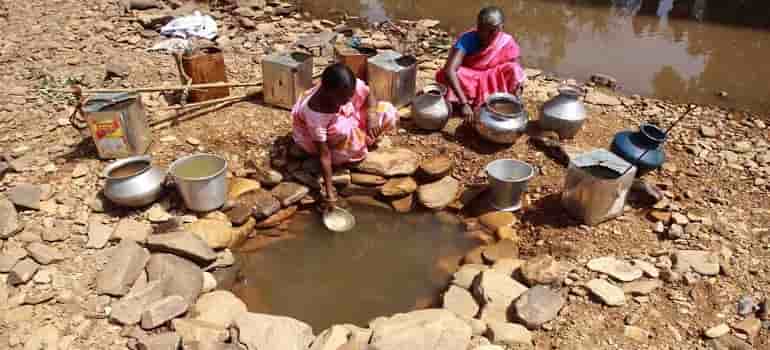Ancient Wisdom Meets Modern Challenges: Harnessing Time-Tested Techniques to Combat Water Scarcity
India boasts a rich heritage of traditional water management techniques, offering valuable insights for tackling contemporary environmental issues like the severe water crisis plaguing Bengaluru. This article explores how reviving these age-old practices can be effectively combined with modern solutions to ensure a sustainable water future for the city.
The Legacy of Water Stewardship
For centuries, Indian communities have prioritized water conservation and utilized ingenious methods for storage and purification. Earthenware pots (clay pots) and copper utensils were not merely vessels; they served as natural water filters, regulating temperature and enhancing mineral content. Keeping clay pots filled with water offered a refreshing respite for thirsty passersby, exemplifying the spirit of community service (seva).
A Shift Towards Convenience and its Consequences
The allure of Western lifestyles led to a decline in these traditional practices. Plastic replaced clay, convenience overshadowed cultural significance, and the scientific backing behind these methods was disregarded. This shift in priorities has contributed significantly to the environmental crisis we face today.
Rediscovering the Benefits of Tradition
The growing awareness of environmental issues has led to a resurgence of interest in traditional practices. Copper bottles are embraced for their health properties, major corporations acknowledge the value of copper in water purification, and clay pots are being redesigned to suit modern aesthetics.
Bengaluru’s Water Crisis: A Case Study
Bengaluru’s water woes stem from a multitude of factors. Excessive concretization impedes rainwater infiltration, hindering groundwater recharge. Furthermore, dependence on borewells coupled with erratic rainfall and prolonged droughts has caused alarming depletion of groundwater reserves.
Charting a Course for Water Security
India’s dependence on groundwater necessitates immediate action. Here are potential solutions:
- Rainwater Harvesting: Making rainwater harvesting mandatory for all buildings can significantly bolster water collection.
- Leak Detection and Repair: Investing in leak detection technologies and prompt pipeline repairs can drastically reduce water wastage.
- Exploring Alternative Sources: Desalination plants for seawater purification and treated wastewater reuse for non-potable purposes offer additional water sources.
Promoting Water Conservation:
- Public Awareness Campaigns: Educating citizens about water conservation practices can foster responsible water usage.
- Water Pricing: Implementing tiered water pricing structures can incentivize conservation by penalizing excessive consumption.
Reintroducing Wells: A Feasible Solution for Bengaluru’s Water Crisis?
While traditional practices hold immense value, reintroducing wells in every house and high-rise society in Bengaluru might not be a universally suitable solution for the city’s water crisis. However, exploratory measures incorporating traditional well systems can be considered:
- Community Wells: Strategic construction of community wells in public spaces like parks or community centers could provide supplementary water source for non-potable purposes (gardening, car washing).
- Recharge Wells: These wells act as channels for rainwater to seep back into the aquifer, aiding in groundwater recharge.
Sustainable Water Management:
- Strengthening Water Governance: Enhancing water management practices and enforcing stricter regulations to prevent misuse are crucial.
- Sustainable Urban Planning: Promoting green infrastructure like parks and permeable surfaces can aid rainwater absorption and reduce runoff.
Collaboration and Innovation:
- Public-Private Partnerships: Collaborating with private entities leverages their expertise and resources for improved water infrastructure and efficient management solutions.
- Investment in Research and Development: Funding research on water-saving technologies like drip irrigation and developing drought-resistant crops can address future challenges.
Interlinking of Rivers:
The national interlinking of rivers (ILR) proposes transferring water from surplus regions to water-scarce areas to address scarcity.
Community Participation:
- Water Conservation at All Levels: Implementing water conservation measures at individual, community, and national levels is essential.
- Sustainable Agriculture: Encouraging farmers to adopt water-efficient practices like drip irrigation and crop rotation can significantly reduce agricultural water consumption.
Addressing Water Pollution:
- Combating Water Pollution: Enforcing stricter regulations on industrial discharge, sewage treatment, and agricultural runoff is crucial.
- Wastewater Treatment: Implementing wastewater treatment plants and adopting eco-friendly practices can help reduce pollution in water sources.
Legislative and Governance Framework:
- Strengthening Water Governance: Enacting and enforcing water-related legislation, establishing water management authorities, and introducing minimum support policies for less water-intensive crops can ensure sustainable water management.
The One Water Approach:
This holistic approach acknowledges the value of all water sources and emphasizes integrated management involving communities, industries, and policymakers for ecological and economic benefits.
By embracing the wisdom of traditional water management practices alongside modern advancements, Bengaluru can chart a course towards a sustainable water future. Community participation, coupled with robust governance and innovative solutions, is imperative to ensure water security for generations to come.


